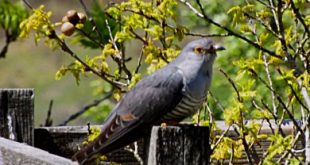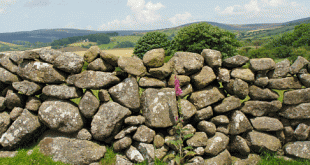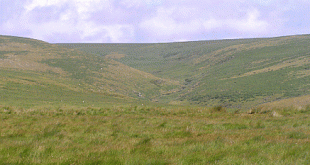There is not a finer sound than to be walking on the Dartmoor commons on a summer’s day and to hear the distinctive call of a cuckoo. I have heard hundreds of them but would estimate that I have actually seen about a dozen. This elusiveness is what adds to …
Read More »Crab Apples
The Crab Apple Tree (Malus sylvestris) is one of the original ancestors of today’s cultivated apple trees. The twigs of the tree sometimes develop little spines thus taking on a ‘crab-like’ appearance which has led to the idea that this is where its name came from. The Crab …
Read More »Foxgloves
The Dartmoor Cowflop sounds as if it’s something whose location people bet on at a cow crapping contest, but no, nothing as repulsive. It is the old moor name for that magical plant that the piskies love so much – the foxglove. Don’t ask why it is called a cowflop …
Read More »Clover
Who has not at some time or other idly rummaged through a clover patch in search of the elusive four-leafed specimen? I have only ever found one example, and has it brought good luck? No, because after finding it I carefully wrapped the precious clover in my handkerchief and by …
Read More »Cereals
In view of the geography and climate of Dartmoor it could be logical to say that there would have been very little cereal cultivation on the moor but amazingly this would be wrong. There has always been the idea that cereals were not grown above the 1,000ft (304.8m) contour line. …
Read More »Cattle
The extensive Bronze Age reave system on Dartmoor is testament to how long cattle have been grazing the moor. When a mans wealth was measured by the number of cattle he owned it was therefore important to stock and control the animals, hence the enclosures created by the reaves. There …
Read More »Buzzards
Of all the birds that grace the skies of Dartmoor, the buzzard must be the most majestic, if the National Park was to have a bird as its symbol it would surely be the buzzard. There is nothing better than to walk up onto the moor early on a summer’s …
Read More »Butcher Birds
The ‘Butcher Bird’ or Red Backed Shrike (Lanius collurio) is normally classified as a ‘rare passage migrant’ on Dartmoor and according to the RSPB is listed in the red category, this means the species has the highest conservation priority thus needing urgent action. I must confess that I have never …
Read More »Bracken
Personally speaking, the thing I hate most about modern Dartmoor is the encroachment of bracken, it is getting a serious problem for many people. Walkers hate it as on hot summer days the last thing you want to have to do is wade through shoulder high bracken and then spend …
Read More »Bog Asphodel
One of the key habitats of Dartmoor is the Blanket Bog and living in the plant communities of these areas is the Bog Asphodel. The plant is classified as a ‘Key Indicator Species’ for Blanket Bogs, this basically means it; “is a species that has a disproportionately large effect on …
Read More » Legendary Dartmoor The many aspects past and present of Dartmoor
Legendary Dartmoor The many aspects past and present of Dartmoor










